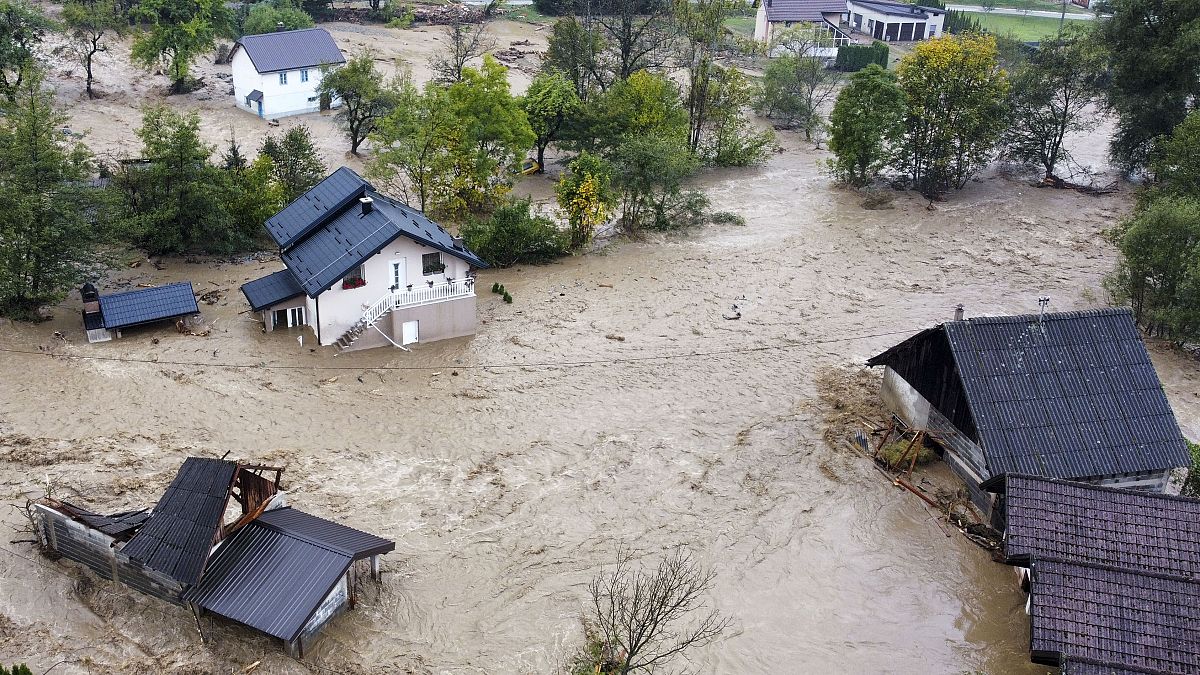Bosnia and Herzegovina experienced devastating flooding and landslides on Friday, resulting in the deaths of at least 15 people. The severe rainstorm caused widespread destruction, especially in the town of Jablanica where 14 of the fatalities occurred. The road and railway connecting Sarajevo with Mostar and the Adriatic Sea were affected, making the area inaccessible. The Herzegovinian town of Jablanica was completely cut off due to the sweeping away of roads and train lines by debris. Aerial drone footage showed villages and towns submerged underwater, while social media videos depicted scenes of muddy torrents and damaged roads.
In response to the disaster, Bosnia’s Defence Minister Zukan Helez stated that troops had been deployed to assist with rescue and recovery efforts. Local volunteers and the army have been working tirelessly to save those who are alive and buried in houses affected by landslides. Rescue operations are ongoing, as several people are still missing and many more are injured. The priority remains on saving lives and helping those in need. The civic protection service warned that many people were endangered due to the flooding and landslides, with reports of missing persons and casualties.
The heavy rains and strong winds not only affected Bosnia and Herzegovina but also neighboring countries such as Croatia and Montenegro. In Croatia, several roads were closed, and the capital of Zagreb braced for potential flooding as the swollen Sava River posed a threat. In Montenegro, torrential rains caused flooding in villages and homes, cutting off access to some areas. The impact of the severe weather extended beyond Bosnia and Herzegovina, highlighting the widespread devastation caused by the rainstorm.
Despite the challenges posed by the flooding and landslides, authorities urged residents to stay on the upper floors of their homes and avoid venturing out onto flooded streets. The priority was on ensuring the safety of those affected by the natural disaster and providing assistance to those in need. The images and videos circulating on social media painted a grim picture of the extent of the damage, with cars and domestic animals swept away by the surging waters. The collapse of roads and train lines added to the difficulties faced by rescue teams in reaching affected areas.
The flooding and landslides in Bosnia and Herzegovina serve as a stark reminder of the vulnerability of communities to extreme weather events. Climate change is contributing to more frequent and intense storms, leading to heightened risks of flooding and landslides. The need for robust disaster preparedness and response measures is evident in the face of such natural disasters. The coordination between local authorities, the army, and volunteers highlights the importance of a collective effort to mitigate the impacts of emergencies and save lives.
As Bosnia and Herzegovina grapples with the aftermath of the flooding and landslides, the focus remains on supporting those affected and rebuilding damaged infrastructure. The road and railway connectivity between Sarajevo, Mostar, and the Adriatic Sea will need significant repairs to restore access and ensure the safety of residents. The resilience and unity displayed by communities in times of crisis are a testament to their strength in the face of adversity. Moving forward, the lessons learned from this natural disaster will inform future disaster management strategies and strengthen preparedness for similar events in the future.











